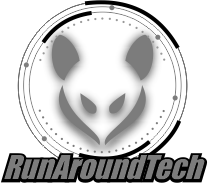Green technology is transforming modern agriculture by introducing sustainable practices that improve efficiency and reduce environmental impact. These innovations help farmers meet the growing demand for food while minimizing their impact on the land.
Adopting green solutions is becoming essential for the long-term viability of farming operations worldwide. If you’re an agricultural manager or simply interested in the latest technology in the industry, here are some of the latest green solutions helping to enhance farms’ sustainability.
The Importance of Adopting Sustainable Technology
The agricultural industry faces significant pressure to increase output while addressing environmental concerns. Sustainable technologies minimize the ecological footprint of farming activities to meet rising demand as well as standards being put in place.
Implementing these solutions helps preserve soil health, conserve water, and reduce greenhouse gas emissions. This shift ensures that farms can remain productive and resilient in a changing climate.
The Benefits of Green Technology in Farming
Green technology provides substantial environmental and economic advantages. Environmentally, it leads to healthier ecosystems by reducing pollution and conserving vital resources like water and soil.
Economically, these technologies lower operational costs through more efficient resource use, such as reduced water and energy consumption. This dual benefit makes sustainability a smart business decision for modern farms.
Examples of Green Agriculture Technology in Action
Green technology is transforming traditional farming practices by introducing innovative solutions that promote efficiency, reduce environmental impact, and support long-term sustainability. Below are some key examples of how farmers are applying green technology in their applications.
Smart Irrigation Systems
Smart irrigation systems use sensors and data analytics to deliver water exactly when and where it is needed. This precision minimizes water waste and prevents over-irrigation, which can damage crops and soil and waste precious resources.
Water efficiency is a key factor to consider when selecting a farm irrigation system. These systems help farms maintain crop health while conserving this critical resource.
Renewable Energy Use
Farms are increasingly adopting renewable energy sources like solar and wind power to run their operations. Installing solar panels or wind turbines can significantly reduce reliance on fossil fuels and lower energy costs. This transition decreases a farm’s carbon footprint and provides a stable and predictable energy supply.
Precision Agriculture Technology
Precision agriculture employs GPS, drones, and IoT sensors to monitor crop conditions in real time. This technology allows farmers to apply fertilizers and pesticides with high accuracy, reducing chemical runoff and improving crop yields. By making data-driven decisions, farmers can optimize resource use and enhance the overall sustainability of their operations.
Embracing a Greener Future in Farming
Integrating green technology is essential for enhancing agricultural operations. Smart irrigation, renewable energy, and precision agriculture are powerful tools that enable farmers to operate more sustainably and profitably.
By adopting these solutions, farmers can improve their environmental stewardship while securing their economic future. Remember the above examples to consider how green technology can enhance your own farming operations.

